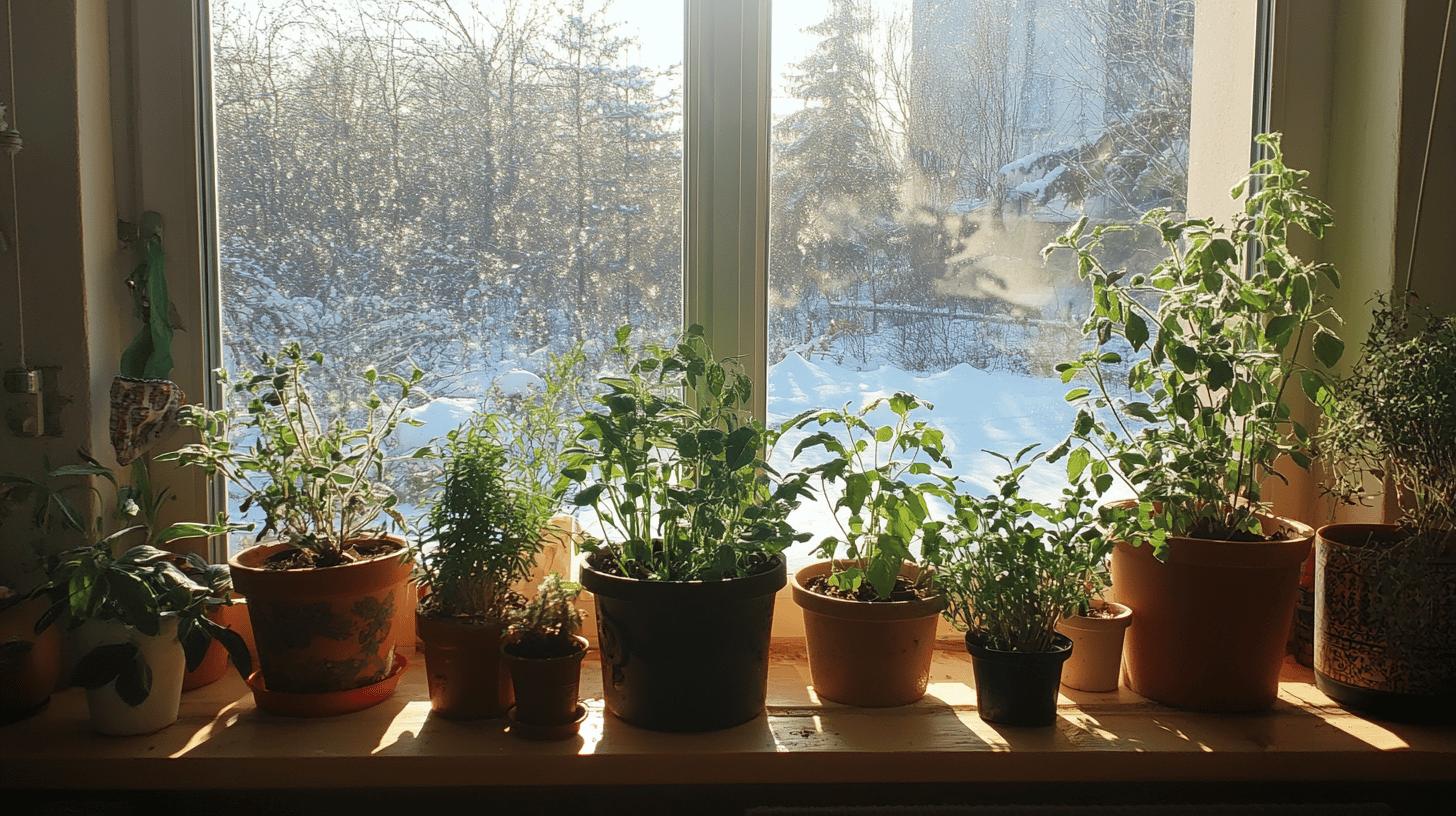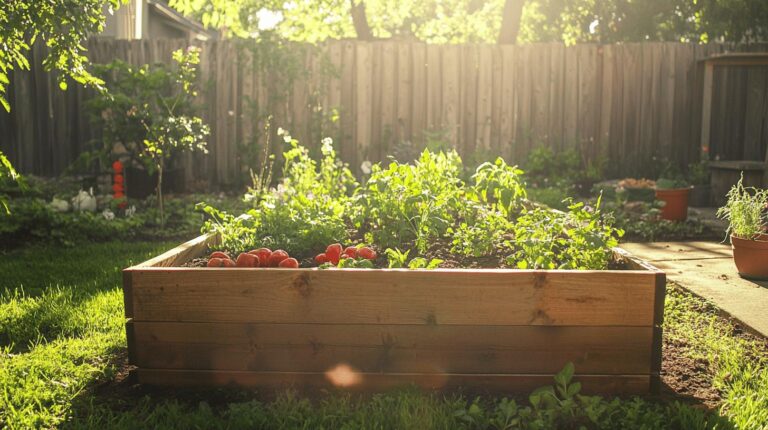Growing Herbs in the Winter: A Guide to Fresh Flavors All Season Long
Picture this: it’s a chilly winter evening, and you’re cooking up a cozy meal. As you reach for fresh basil or rosemary, you realize you don’t have to rely on store-bought herbs that have lost their vibrancy. Instead, you pluck a few sprigs from your very own indoor herb garden. Sound too good to be true? It’s not! With a little effort and the right know-how, you can grow a thriving herb garden indoors, even in the dead of winter.
In this guide, I’ll walk you through everything you need to know to keep your kitchen stocked with fresh, aromatic herbs all winter long. From choosing the right herbs to setting up your indoor garden and harvesting your bounty, let’s dive into the world of winter herb gardening.
Setting Up an Indoor Herb Garden for Winter

Winter doesn’t have to mean the end of fresh, homegrown flavors. Growing herbs indoors is a rewarding way to brighten up your home, add a touch of greenery, and elevate your cooking. Plus, tending to your herbs can be a therapeutic escape from the winter blues.
The key to success lies in understanding the unique needs of herbs during the colder months. With shorter days and less natural light, you’ll need to create an environment that mimics the warmth and brightness of summer. But don’t worry—it’s easier than you think!
Setting Up Your Indoor Herb Garden

1. Choose the Right Spot
Herbs are sun-loving plants, so finding a bright location is crucial. A south-facing window is ideal, as it receives the most sunlight throughout the day. If natural light is limited, don’t fret—grow lights are a game-changer. These artificial lights mimic the sun’s spectrum, providing your herbs with the energy they need to thrive.
Pro tip: Rotate your pots every few days to ensure all sides of the plant receive equal light.
2. Pick the Perfect Containers
When it comes to containers, size and material matter. Herbs need room to spread their roots, so opt for pots that are at least 6 inches deep. Terra cotta pots are a favorite among gardeners because they’re porous, allowing for better moisture control and preventing overwatering. If you’re using wider containers, like metal tubs, make sure they have drainage holes to avoid waterlogged soil.
Here’s a quick guide to container options:
| Container Type | Benefits |
|---|---|
| Terra Cotta Pot | Excellent moisture control, classic look |
| Metal Tub | Great for grouping multiple herbs |
| Plastic Pot | Lightweight and budget-friendly |
3. Use the Right Soil
Herbs prefer well-draining soil that’s rich in nutrients. A high-quality potting mix or coconut coir works wonders, providing the perfect balance of aeration and moisture retention. Avoid using garden soil, as it can compact in pots and hinder root growth.
Essential Equipment for Winter Herb Gardening
To set your indoor herb garden up for success, you’ll need a few key tools:
- Grow Lights: These are essential if natural light is scarce. LED or fluorescent lights are great options.
- Humidity Domes: Perfect for seed germination and protecting young plants.
- Shade Cloth: Protects herbs from cold drafts near windows.
- Watering Can with a Narrow Spout: Ensures precise watering without overdoing it.
Choosing the Best Herbs for Winter

Not all herbs are created equal when it comes to winter growing. Some thrive indoors, while others struggle. Here are a few hardy options to consider:
- Parsley: A versatile herb that grows well in cooler conditions.
- Thyme: Cold-tolerant and perfect for hearty winter dishes.
- Rosemary: Loves sunlight but can adapt to indoor environments with proper care.
- Mint: Grows like a weed and adds a refreshing touch to teas and desserts.
- Chives: Easy to grow and great for garnishing soups and salads.
Caring for Your Indoor Herb Garden
1. Water Wisely
Overwatering is the number one killer of indoor herbs. Check the soil moisture by sticking your finger about an inch into the soil—if it feels dry, it’s time to water. Herbs prefer slightly drier conditions, so err on the side of underwatering rather than overwatering.
2. Maintain Humidity
Winter air can be dry, which isn’t ideal for herbs. To boost humidity, place a tray of water near your plants or use a humidifier. Grouping plants together also helps create a microclimate with higher humidity.
3. Prune Regularly
Regular pruning encourages bushier growth and prevents your herbs from becoming leggy. Use sharp scissors to snip stems just above a leaf node, and don’t be afraid to harvest often—your plants will thank you!
Harvesting and Preserving Your Herbs
One of the joys of growing herbs is being able to harvest them fresh whenever you need them. For the best flavor, harvest in the morning when the essential oils are most concentrated.
If you find yourself with more herbs than you can use, try preserving them:
- Drying: Hang small bunches upside down in a warm, dry place. Once dried, store them in airtight containers.
- Freezing: Chop herbs and freeze them in ice cube trays with water or olive oil. These cubes are perfect for adding to soups, stews, and sauces.
Final Thoughts
Growing herbs indoors during the winter is a delightful way to bring a bit of summer into your home. With the right setup, a little patience, and some TLC, you can enjoy fresh, flavorful herbs all season long. Whether you’re a seasoned gardener or a beginner, there’s nothing quite like the satisfaction of snipping fresh herbs from your own indoor garden.
So, why not give it a try? Your taste buds—and your winter meals—will thank you.
FAQs
Can I grow herbs indoors year-round?
Absolutely! With proper light, temperature, and care, you can grow herbs indoors all year.
What’s the best herb for beginners?
Mint and chives are great starter herbs—they’re hardy, low-maintenance, and grow quickly.
Do I need special equipment to grow herbs indoors?
While not strictly necessary, grow lights and humidity domes can make a big difference, especially in winter.
How often should I water my indoor herbs?
Water when the top inch of soil feels dry, usually once or twice a week depending on the herb and environment.
Can I grow herbs from seeds indoors?
Yes! Starting from seeds is cost-effective and rewarding. Just be patient—germination can take a few weeks.
There you have it—a complete guide to growing herbs indoors this winter. Happy gardening, and may your kitchen be filled with the fresh scents and flavors of homegrown herbs! 🌿


